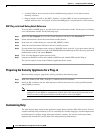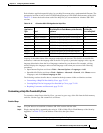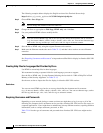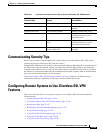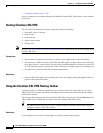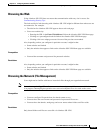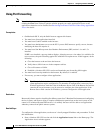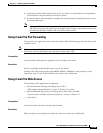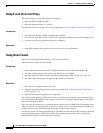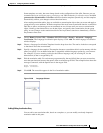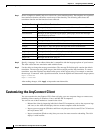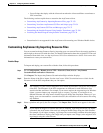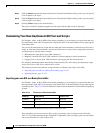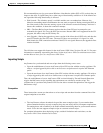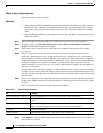
72-130
Cisco ASA 5500 Series Configuration Guide using ASDM
Chapter 72 Configuring Clientless SSL VPN
Configuring Remote Systems to Use Clientless SSL VPN Features
Using E-mail Via E-mail Proxy
The following legacy e-mail applications are supported:
• Microsoft Outlook 2000 and 2002
• Microsoft Outlook Express 5.5 and 6.0
See the instructions and examples for your mail application in Using E-Mail over Clientless SSL VPN.
Prerequisites
• You must have the SSL-enabled mail application installed.
• Do not set the ASA SSL version to TLSv1 Only. Outlook and Outlook Express do not support TLS.
• You must have your mail application properly configured.
Restrictions
• Other SSL-enabled clients should also work, but we have not verified them.
Using Smart Tunnel
JAVA is not automatically downloaded for you as in port forwarder.
Administration privileges are not required.
Prerequisites
• Smart tunnel requires either ActiveX or JRE on Windows and Java Web Start on Mac OS.
• You must enable cookies on the browser. (By default, they are enabled.)
• You must install Sun Microsystems Java Runtime Environment (JRE) version 1.4.x and 1.5.x.
• You must enable Javascript on the browser. (By default, it is enabled.)
Restrictions
• Mac OS does not support a front-side proxy.
• Supports only the operating systems and browsers specified in “Configuring Smart Tunnel Access”
section on page 72-42.
• Only TCP socket-based applications are supported.
The software image package for the ASA includes a translation table template for each domain that is
part of the standard functionality. The templates for plug-ins are included with the plug-ins and define
their own translation domains.
You can export the template for a translation domain, which creates an XML file of the template at the
URL you provide. The message fields in this file are empty. You can edit the messages and import the
template to create a new translation table object that resides in flash memory.
You can also export an existing translation table. The XML file created displays the messages you edited
previously. Reimporting this XML file with the same language name creates a new version of the
translation table object, overwriting previous messages.



